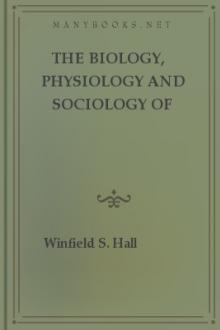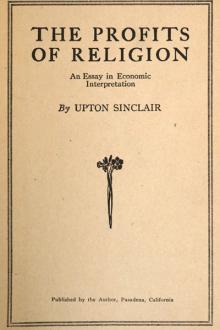Illusions by James Sully (story reading txt) 📕

- Author: James Sully
- Performer: -
Book online «Illusions by James Sully (story reading txt) 📕». Author James Sully
This much may suffice, perhaps, by way of a general description of the sleeping and dreaming state. Other points will make themselves known after we have studied the contents and structure of dreams in detail.
Dreams are commonly classified (e.g. by Wundt) with hallucinations, and this rightly, since, as their common appellation of "vision" suggests, they are for the most part the semblance of percepts in the absence of external impressions. At the same time, recent research goes to show that in many dreams something answering to the "external impression" in waking perception is the starting-point. Consequently, in order to be as accurate as possible, I shall divide dreams into illusions (in the narrow sense) and hallucinations.
Dream-Illusions.
By dream-illusions I mean those dreams which set out from some peripheral nervous stimulation, internal or external. That the organic processes of digestion, respiration, etc., act as stimuli to the centres in sleep is well known. Thus, David Hartley assigns as the second great source of dreams "states of the body."[79] But it is not so well known to what an extent our dreams may be influenced by stimuli acting on the exterior sense-organs. Let us first glance at the action of such external stimuli.
Action of External Stimuli.
During sleep the eyes are closed, and consequently the action of external light on the retina impeded. Yet it is found that even under these circumstances any very bright light suddenly introduced is capable of stimulating the optic fibres, and of affecting consciousness. The most common form of this is the effect of bright moonlight, and of the early sun's rays. Krauss tells a funny story of his having once, when twenty-six years old, caught himself, on waking, in the act of stretching out his arms towards what his dream-fancy had pictured as the image of his mistress. When fully awake, this image resolved itself into the full moon.[80] It is not improbable, as Radestock remarks, that the rays of the sun or moon are answerable for many of the dreams of celestial glory which persons of a highly religious temperament are said to experience.
External sounds, when not sufficient to rouse the sleeper, easily incorporate themselves into his dreams. The ticking of a watch, the stroke of a clock, the hum of an insect, the song of a bird, the patter of rain, are common stimuli to the dream-phantasy. M. Alf. Maury tells us, in his interesting account of the series of experiments to which he submitted himself in order to ascertain the result of external stimulation on the mind during sleep, that when a pair of tweezers was made to vibrate near his ear, he dreamt of bells, the tocsin, and the events of June, 1848.[81] Most of us, probably, have gone through the experience of impolitely falling asleep when some one was reading to us, and of having dream-images suggested by the sounds that were still indistinctly heard. Scherner gives an amusing case of a youth who was permitted to whisper his name into the ear of his obdurate mistress, the consequence of which was that the lady contracted a habit of dreaming about him, which led to a felicitous change of feeling on her part.[82]
The two lower senses, smell and taste, seem to play a less-important part in the production of dream-illusions. Radestock says that the odour of flowers in a room easily leads to visual images of hot-houses, perfumery shops, and so on; and it is probable that the contents of the mouth may occasionally act as a stimulus to the organ of taste, and so give rise to corresponding dreams. As Radestock observes, these lower sensations do not commonly make known their quality to the sleeper's mind. They become transformed at once into visual, instead of into olfactory or gustatory percepts. That is to say, the dreamer does not imagine himself smelling or tasting, but seeing an object.
The contact of objects with the tactual organ is one of the best recognized causes of dreams. M. Maury found that when his lips were tickled, his dream-fancy interpreted the impression as of a pitch plaster being torn off his face. An unusual pressure on any part of the body, as, for example, from contact with a fellow-sleeper, is known to give rise to a well-marked variety of dream. Our own limbs may even appear as foreign bodies to our dream-imagination, when through pressure they become partly paralyzed. Thus, on one occasion, I awoke from a miserable dream, in which I felt sure I was grasping somebody's hand in bed, and I was racked by terrifying conjectures as to who it might be. When fully awake, I discovered that I had been lying on my right side, and clasping the wrist of the right arm (which had been rendered insensible by the pressure of the body) with the left hand.
In close connection with these stimuli of pressure are those of muscular movement, whether unimpeded or impeded. We need not enter into the difficult question how far the "muscular sense" is connected with the activity of the motor nerves, and how far with sensory fibres attached to the muscular or the adjacent tissues. Suffice it to say that an actual movement, a resistance to an attempted movement, or a mere disposition to movement, whether consequent on a surplus of motor energy or on a sensation of discomfort or fatigue in the part to be moved, somehow or other makes itself known to our minds, even when we are deprived of the assistance of vision. And these feelings of movement, impeded or unimpeded, are common initial impulses in our dream-experiences. It is quite a mistake to suppose that dreams are built up out of the purely passive sensations of sight and hearing. A close observation will show that in nearly every dream we imagine ourselves either moving among the objects we perceive or striving to move when some weighty obstacle obstructs us. All of us are familiar with the common forms of nightmare, in which we strive hopelessly to flee from some menacing evil, and this dream-experience, it may be presumed, frequently comes from a feeling of strain in the muscles, due to an awkward disposition of the limbs during sleep. The common dream-illusion of falling down a vast abyss is plausibly referred by Wundt to an involuntary extension of the foot of the sleeper.
Action of Internal Stimuli.
Let us now pass from the action of stimuli lying outside the organism, to that of stimuli lying within the peripheral regions of the sense-organs. I have already spoken of the influence of subjective sensations of sight, hearing, etc., on the illusions of waking life, and it is now to be added that these sensations play an important part in our dream-life. Johannes Müller lays great prominence on the part taken by ocular spectra in the production of dreams. As he observes, the apparent rays of light, light-patches, mists of light, and so on, due to changes of blood-pressure in the retina, only manifest themselves clearly when the eyes are closed and the more powerful effect of the external stimulus cut off. These subjective spectra come into prominence in the sleepy condition, giving rise to what M. Maury calls "hallucinations hypnagogiques," and which he regards (after Gruithuisen) as the chaos out of which the dream-cosmos is evolved.[83] They are pretty certainly the starting-point in those picturesque dreams in which figure a number of bright objects, such as beautiful birds, butterflies, flowers, or angels.
That the visual images of our sleep do often involve the peripheral regions of the organ of sight, seems to be proved by the singular fact that they sometimes persist after waking. Spinoza and Jean Paul Richter both experienced this survival of dream-images. Still more pertinent is the fact that the effects of retinal fatigue are producible by dream-images. The physiologist Gruithuisen had a dream, in which the principal feature was a violet flame, and which left behind it, after waking, for an appreciable duration, a complementary image of a yellow spot.[84]
Subjective auditory sensations appear to be much less frequent causes of dream-illusions than corresponding visual sensations. Yet the rushing, roaring sound caused by the circulation of the blood in the ear is, probably, a not uncommon starting-point in dreams. With respect to subjective sensations of smell and taste, there is little to be said. On the other hand, subjective sensations due to varying conditions in the skin are a very frequent exciting cause of dreams. Variations in the state of tension of the skin, brought about by alteration of position, changes in the character of the circulation, the irradiation of heat to the skin or the loss of the same, chemical changes,—these are known to give rise to a number of familiar sensations, including those of tickling, itching, burning, creeping, and so on; and the effects of these sensations are distinctly traceable in our dreams. For example, the exposure of a part of the body through a loss of the bed-clothes is a frequent excitant of distressing dreams. A cold foot suggests that the sleeper is walking over snow or ice. On the other hand, if the cold foot happens to touch a warm part of the body, the dream-fancy constructs images of walking on burning lava, and so on.
These sensations of the skin naturally conduct us to the organic sensations as a whole; that is to say, the feelings connected with the varying condition of the bodily organs. These include the feelings which arise in connection with the processes of digestion, respiration, and circulation, and the condition of various organs according to their state of nutrition, etc. During our waking life these organic feelings coalesce for the most part, forming as the "vital sense" an obscure background for our clear discriminative consciousness, and only come forward into this region when very exceptional in character, as when respiration or digestion is impeded, or when we make a special effort of attention to single them out.[85] When we are asleep, however, and the avenues of external perception are closed, they assume greater prominence and distinctness. The centres, no longer called upon to react on stimuli coming from without the organism, are free to react on stimuli coming from its hidden recesses.





Comments (0)